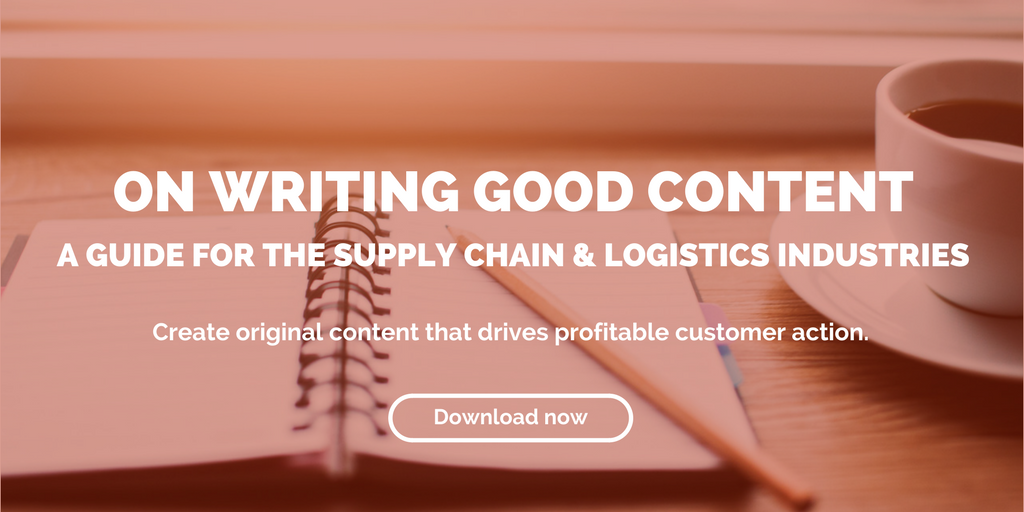
by Fronetics | Jun 6, 2019 | Blog, Content Marketing, Leadership, Logistics, Marketing, Supply Chain
Here are 5 books for supply chain professionals to gain insights about the industry and leadership practices.
Highlights:
- There’s no substitute for the in-depth analysis and explanation made possible by the long-format of a book.
- Leadership and professional growth means learning from the perspectives and insights of others.
- This year’s list includes works by Richard J. Sherman, Steven Bowen, and Edward H. Frazelle.
There’s no question that we live in a digital age, with information on almost any topic quickly accessible at our fingertips. But even in this age of short soundbites and reductively simplistic explanations, there’s no substitute for the value of sustained analysis and critical insight. To that point, we’ve put together a list of five books for supply chain professionals.
The supply chain leaders and analysts whose books are on this list each bring unique skills, perspectives, and approaches to the table. Being your best professional self means learning from the successes, failures, and insights of others. Add these five books to your summer reading list, and let us know how they make an impact on your professional life.
5 books for supply chain professionals
1) Strategic Supply Chain Management: The Five Core Disciplines for Top Performance, Second Edition
Co-authored by Shoshanah Cohen and Joseph Roussel, this classic guide to supply chain strategy has been re-created to help business leaders gain an advantage in today’s volatile, globalized arena. The global landscape has changed dramatically since the first edition of Strategic Supply Chain Management established itself as the authority on creating value and achieving competitive advantage from the supply chain.
This second edition is your answer to gaining a strategic advantage in the face of these challenges. Drawing on dozens of new company examples as well as cutting-edge benchmarking research, it shows you how to make your supply chains more agile, flexible, and resilient.
2) Supply Chain Transformation: Practical Roadmap to Best Practice Results
Much is being written about global supply chain and sourcing options emerging in today’s marketplace. Transforming supply chain management to achieve operational excellence is a mandate for many companies globally. Supply Chain Transformation, written by Richard J. Sherman, walks you through this potentially difficult process and gets you started on the journey.
Much more than just a how-to book, it’s a why-to book that is as compelling for any business person as it is for supply chain management professionals. This book provides an invaluable road map to companies looking to transform their supply chains and organizations to achieve best practice results, beginning with guidance on how to make the case for change. Change is inevitable; growth is optional.
3) Total Value Optimization: Transforming Your Global Supply Chain into a Competitive Weapon
Today’s corporate leaders are under increasing pressure to deliver differentiated, lasting performance, fast. New business models are continuously cropping up, with competitors becoming more numerous, more formidable, and more global. This puts profitability at risk as whole supply chains shift in industries.
Steven Bowen provides a clear pathway to transforming supply chains into the ultimate competitive weapons. Bowen’s method, which he calls Total Value Optimization, places customer value at the heart of the business-model, through a demand-driven digital supply chain. Grounded in data analytics, Total Value Optimization is essential for companies looking to survive and thrive in today’s fast-paced and ever-changing business environment.
4) Designing and Managing the Supply Chain – Third Edition
Designing and Managing the Supply Chain provides state-of-the-art models, concepts, and solution methods that are important for the design, control, operation, and management of supply chain systems. In particular, authors David Simchi-Levi, Philip Kaminsky, and Edith Simchi-Levi attempt to convey the intuition behind many key supply chain concepts and to provide simple techniques that can be used to analyze various aspects of the supply chain.
Topical coverage reflects the authors’ desire to introduce readers to those aspects of supply chain management that are critical to the success of a business. Although many essential supply chain management issues are interrelated, the authors strive to make each chapter as self-contained as possible, so that the reader can refer directly to chapters covering topics of interest.
5) Supply Chain Strategy, Second Edition: Unleash the Power of Business Integration to Maximize Financial, Service, and Operations Performance
The industry standard in supply chain management, Supply Chain Strategy’s Second Edition is fully revised and updated to provide today’s logistics solutions. The proven pillars of success in logistics and supply chain management introduced in the first edition of Supply Chain Strategy now guide the supply chains of many of the world’s most successful organizations.
Written by Edward H. Frazelle, Supply Chain Strategy includes up-to-date case studies showing how some of the world’s most successful companies meet supply chain goals and helps you overcome your own challenges with the latest supply chain innovations, including big-data analytics, supply chain command and control centers, large-scale supply chain optimization, integrated supply chain planning, and real-time global supply chain visibility.
Bonus read: “First: Sandra Day O’Connor”
No, Evan Thomas’ bio of Justice Sandra Day O’Connor doesn’t specifically relate to the supply chain. But if you’re looking for inspiring reading on leadership, overcoming adversity, and empowering women in the workplace, this newly released biography of the first female Supreme Court Justice is an excellent read.
What books for supply chain professionals have you read recently?
Related posts:


by Jennifer Hart Yim | Mar 27, 2019 | Blog, Content Marketing, Current Events, Leadership, Marketing, Supply Chain, Talent
In today’s job market, companies have to compete harder than ever before and candidates, realizing their position, have begun ghosting employers. Ghosting has never been in an issue in the professional setting until now.
Highlights:
- According to a new report, more companies and recruiters are getting ghosted, with thousands of users on LinkedIn chiming in about what seems to be a uniquely-millennial phenomenon moving into the workplace.
- Ghosting’s prevalence speaks to a talent attraction and retention problem that many companies are having in this marketplace.
- Recruiters who are specialized in your vertical have an established base of candidates, so you can remove ghosting from the equation entirely.
This guest post comes to us from Argentus Supply Chain Recruiting, a boutique recruitment firm specializing in Supply Chain Management and Procurement.
Many of us have (thankfully) been out of the dating game long enough that we’ve never experienced what most millennials have: the dreaded ghost. You meet someone new, hit it off, go on a few dates, maybe even tell your friends and parents about an exciting romantic prospect. Then the hammer drops: all of a sudden, radio silence. No “dear John” letter, no break-up text, and no explanation whatsoever. It’s a digitally-enabled way of severing ties that’s so casual it hurts, because the affected (dare we say victim?) never gets to find out what exactly happened. The imagination runs wild with possible motivations for this disrespect: was it them? Was it me?
You never really know. That’s what makes it so tough.
Now, according to reports, this peculiar social phenomenon has metastasized into the workplace:
The job market is so hot, more candidates are ghosting their employers. Or prospective employers.
Welcome to 2019.
It’s no secret that the hiring market is strong, with near-historic low levels of unemployment. Now, according to a recent NPR report, more companies and recruiters are getting ghosted. It’s also become a hot topic on LinkedIn, with thousands of users chiming in about what seems to be a uniquely-millennial phenomenon moving into the workplace. Reports about ghosting even made their way into a recent report from the U.S. Federal Reserve – which shows that ghosting isn’t just a meme, but something that’s really affecting companies’ hiring practices and their bottom line.
NPR – as well as this great article by LinkedIn Contributor Molly Mosley – identify three key species of ghost:
- The employee who accepts a role and gets into the job – thankfully, it’s not often a long-term employee, otherwise a missing person report might be in order – and leaves without a trace.
- The job candidate who books a job interview, or accepts a role, and doesn’t show up, or send any kind of communication or response when contacted.
- The candidate who works with a recruiter, asks to be submitted for a role, and then stops responding. There are quite a few reports about this, but we’re lucky that we haven’t experienced it as much in our recruitment practice at Argentus.
Ghosting is a very modern-feeling phenomenon. It’s a symptom of a more relaxed – dare we say, lax – approach to interpersonal and professional relationships brought about by digital technology. But it’s also a symptom of something more fundamental about this job market:
It’s a candidate’s market – especially in high-demand STEM fields like Supply Chain.
We’re willing to bet that in a recession, all these ghosts would become corporeal again. But for now, candidates have all the leverage, and what’s more, they’re beginning to realize this, which means that companies have to compete harder than ever before.
Don’t get us wrong: ghosting is unacceptable, and we don’t mean to excuse it. No one would want to hire a candidate who’s ghosted an employer in the past, and we’d stop working with anyone if we found out they’ve done it before. It’s, in short, the height of unprofessionalism. Any company who gets ghosted on has really dodged a bullet: who would want to work with someone who would resort to such a childish and cowardly tactic?
But ghosting’s prevalence still speaks to a talent attraction and retention problem that many companies are having in this marketplace. Consider this: if your company interviews someone, and never gives any form of feedback or follow-up – which still happens, believe it or not – you’re ghosting candidates as well.
It cuts both ways. And that gestures towards a few changes that companies can make to help minimize the risk of ghosting – which can waste thousands of dollars of company resources:
Smooth out the onboarding process.
In short, treat prospective candidates like a valuable strategic asset instead of a disposable endless resource. The accounts of ghosting from the workers in the NPR story, as well as others, share something in common: the workers felt disrespected or disregarded by their employers.
[bctt tweet=”The accounts of ghosting from the workers in the NPR story, as well as others, share something in common: the workers felt disrespected or disregarded by their employers.” username=”Fronetics”]
Treating candidates with respect is table stakes in this hiring environment. But consider the ways that you’re unintentionally depersonalizing the hiring and onboarding process: letting it get drawn out with endless approvals and interviews, resorting to impersonal communication methods, failing to have succinct and effecting onboarding policies to get new candidates up to speed.
Lastly, because we can’t resist: a specialized recruitment partner will forward pre-vetted candidates, often ones that they’ve known for years, who you know won’t ghost. Recruiters who are specialized in your vertical have an established base of candidates, so you can remove ghosting from the equation entirely.
But what’s your experience? Have you been ghosted by an employee or job candidate before? Why do you think this issue is coming into the zeitgeist right now?
Related posts:


by Fronetics | Dec 19, 2018 | Blog, Content Marketing, Leadership, Logistics, Marketing, Supply Chain
Our most-viewed leadership posts from this year discuss the characteristics of effective leadership, point out industry trends, and provide resources for leadership growth.
Our top leadership posts from 2018 examine what makes a good leader, as well as what makes a bad leader, and the ramifications of each. They also look at some executive thought leadership about industry trends, notably corporate social responsibility, and talk about how supply chain leaders can make use of social media.
Here are our top 5 leadership posts from 2018.
Fronetics’ top 5 leadership posts of 2018
1. Why CSR: Four Benefits of Corporate Social Responsibility
Corporate social responsibility is a pretty broad term to describe how a company is working to improve its community. And 55% of consumers are willing to pay more for products from socially responsible companies. What does that mean for you? It means that corporate social responsibility is as good for your community as it is for your own brand. Here are four major benefits of corporate social responsibility. Read more.
[bctt tweet=”55% of consumers are willing to pay more for products from socially responsible companies. What does that mean for you? It means that corporate social responsibility is as good for your community as it is for your own brand. ” username=”Fronetics”]
2. 5 Must-Read Books for Supply Chain Leaders
Great leaders embody the ability to inspire and empower their teams to succeed. Here are five books that we recommend reading to keep getting the job done: empowering your team, learning about industry trends, updating your management practices, and other key insights. Read more.
3. 5 Social Media Tips for Supply Chain Executives
Supply Chain Management and its related functions (Procurement, Planning, Vendor Management, Logistics, Operations) are on the opposite end of the spectrum from functions like sales and marketing – areas where your brand is everything. But from our perspective, there are still lots of different benefits that Supply Chain and Procurement executives can gain from building their social media brands. Read more.
4. What’s the Cost of Bad Leadership in Procurement?
Everyone knows that a bad hire can be really costly to a business. When you account for hiring, training, and onboarding costs, plus the opportunity cost of not hiring a successful employee – not to mention the impact on workplace culture – hiring the wrong person can set a company back tens of thousands of dollars. Read more.
5. Supply Chain Leaders: Do These 4 Things with Your Social Media
We’ve written many times before about the importance of supply chain leaders being on social media as the face of their brands. Social media presents a huge opportunity for executives to use their relative industry celebrity to be an extension of their organizations. So you are ready to commit to a more active social media presence (or you’re going to be ghost-posting for your executive). Where do you begin? We’ve come up with 4 tips for supply chain leaders to making the most of their presence on social media. Read more.
Related posts:


by Fronetics | Oct 2, 2018 | Blog, Content Marketing, Leadership, Manufacturing & Distribution, Marketing, Strategy, Supply Chain
Infographics are a content powerhouse, but creating them isn’t always easy. These five tips will help you make the most of this format.
Infographics can be one of the most effective content mediums. We know that digital natives, who make up the majority of B2B buyers today, prefer short-form, highly visual content. So infographics make a lot of sense when it comes to speaking their language.
[bctt tweet=”Infographics can be one of the most effective content mediums. We know that digital natives, who make up the majority of B2B buyers today, prefer short-form, highly visual content. ” username=”Fronetics”]
Infographics are also prime candidates for reposts on social media. But, if you’ve ever tried to create one yourself, you know making an effective infographic is a lot harder than it sounds.
It might seem daunting at first, but these five tips will go a long way to help you in creating infographics that are effective in engaging supply chain buyers.
5 tips for creating infographics that engage supply chain buyers
1. It’s all about the title
Well, maybe not all, but your title does matter a lot. When it comes to infographics, your audience will definitely be judging a book by its cover. This means that your title should be accurate, short (70 characters or less), descriptive, and engaging. This is how your audience will decide whether they’ll click and read.
2. Colors matter
You’d be surprised by how much people are influenced by color in their content choices. The color scheme you choose should make your readers feel comfortable and should be visually appealing. This generally means sticking to two main colors and using no more than four colors. Use clear, bold colors for your main colors, and subtle, warm tones for complimentary colors.
3. Bump up your SEO
There aren’t a lot of downsides to infographics, but, unfortunately, there is one: publishing them on your blog doesn’t do much for your SEO, since text in infographics is contained in the image and isn’t recognized by search bots. But there’s an easy way around this: Include a transcript of your text with your graphic. I recommend writing at least 350 words, in addition to the graphic, to boost SEO.
4. Keep it simple
There’s a reason that simplicity is king when it comes to graphic design online. Increasingly, designers and businesses are favoring clean, minimalistic layouts. This means few unnecessary elements and plenty of white space so as not to overwhelm readers and to convey information without unnecessary distractions.
5. Get interactive!
If you’ve mastered creating infographics and are feeling ambitious, try taking on the next big thing: interactive designs. This means your readers can engage with your content, whether by hovering over it, clicking on it, or even answering questions or taking a quiz.
There are a number of infographic-creation tools available on the internet these days. At Fronetics, we really like using Canva, which has plenty of templates that are easy to use and do a lot of the design work for you.
What are your tips for creating infographics?
Related posts:


by Jennifer Hart Yim | Sep 26, 2018 | Blog, Content Marketing, Leadership, Logistics, Marketing, Supply Chain, Talent
In today’s job market, candidates are in such high demand, companies are posting positions with little or no experience requirements.
This guest post comes to us from Argentus Supply Chain Recruiting, a boutique recruitment firm specializing in Supply Chain Management and Procurement.
On the Argentus blog, we’ve spent the past few months charting the strong job market and its effects on hiring. My, how things have changed. A few short years ago, publications were writing about how employers weren’t bothering to hire for their open positions. Now, candidates are in such high demand, companies are more and more doing something that would be considered radical in the previous economy: posting positions with no experience requirements.
[bctt tweet=”Companies like Microsoft, Bank of America and Github, are in particular relaxing education requirements and looking at candidates who don’t have degrees for positions that would have required a degree during the recession.” username=”Fronetics”]
Kelsey Gee at the Wall Street Journal gave some frontline reporting about the talent picture in the U.S. economy, which is beginning to see strong wage growth follow historically low unemployment rates. She charts how more companies are becoming flexible in their hiring process, to the point of doing away with experience requirements for some positions completely. We’ve written before to argue that companies should hire people for their potential – especially junior employees – and in this market it seems that more companies are putting this into practice. Companies like Microsoft, Bank of America and Github, are in particular relaxing education requirements and looking at candidates who don’t have degrees for positions that would have required a degree during the recession.
Alicia Modestino, an economist at Northeastern University, has argued that in times of recession companies tend to raise job requirements, like in 2008. In times of expansion – like we’re seeing now – companies become more flexible in their requirements to compete for talent, a practice Modestino calls “Down-skilling.”
At first, it might be easy to assume that companies are only doing this for transactional or administrative positions, but the Wall Street Journal interviewed the President of SCM talent group – a Supply Chain Recruitment firm in the U.S. – who said that companies are re-evaluating their requirements for Supply Chain Managers and other strategic positions. He said that his recruitment firm has been turning away clients who want to fish for underpaid or unaware applicants instead of bolstering education, experience and compensation levels in order to compete.
At Argentus, we’re working in the same vertical in Canada. Candidates in our market are in such high demand that we’ve been doing the same.
Anecdotally, we’ve seen a small uptick in roles for high-potential entry level grads in Supply Chain Management – (though still not as many as we’d like to see, with the high number of new grads that come to us!) Companies are becoming slightly more willing to relax requirements on the junior end to hire quickly; in a hiring market as strong as this one, “entry level” can actually mean entry level instead of, paradoxically, requiring at least 3 years of experience. But companies should be more flexible, at least if they want to actually hire instead of kicking tires.
In strong job markets, companies can’t afford to hire the same way they did during a recession. More employees in Procurement and Supply Chain are waking up to their own value, and the strong job market is compounding an already-considerable talent crunch. Hiring managers can’t afford to practice magical thinking in their hiring in this economy – the type of thinking that says, “if we post it, they will come,” or that treats employees like they have no leverage in the process.
The WSJ outlined three options that companies have to keep down hiring costs and secure talent in this market:
- Offer more money up front
- Retrain current staff to upskill them for changing requirements, or:
- Become more flexible in their job requirements.
All three are valuable options, but for some reason the third one has always been a bit of a third rail. Hiring is a risk, and companies don’t want to hire someone who can’t do the job. But just because someone hasn’t done the exact same thing before, or just because they don’t have a degree, or just because they’ve done it before, but in another country, doesn’t mean they can’t do it.
There will always be lots of positions with considerable requirements that can’t be flexed away: a Director of Vendor management who’s conducting a business transformation obviously needs to have done that in the past. A Senior Manager tasked with setting up a totally new Supply Chain needs the deep base of knowledge and connections that certain experience provides. The necessity of strong experience and education requirements makes sense for some positions.
But for a Supply Chain Analyst, or a Buyer role, companies are well-served to relax hard-and-fast requirements and treat applicants on a case by case basis. Assess skills, assess technical and analytical capability, without requiring that candidates fit a specific experiential profile.
In our interviews with senior Supply Chain and Procurement leadership, one thing we hear again and again is that strong business acumen and soft skills – in other words, potential – is more important for junior employees than specific education requirements. So if the Wall Street Journal report is accurate, and more companies are waking up to this line of thinking, you know what?
Bring it on.
Related posts:


by Fronetics | Sep 10, 2018 | Blog, Content Marketing, Leadership, Logistics, Marketing, Supply Chain
In today’s rapidly evolving economy, embracing change is crucial for success. These 5 behaviors define supply chain leaders who are change-agile.
They say the only constant in life is change. When it comes to leadership in the supply chain, the old adage certainly rings true.
If the last few decades have been consistent in any regard, it has been in the need to embrace change to keep things running. Agile leadership has been crucial for supply chain and logistics businesses. Are you the kind of leader that truly embraces change?
Why do I need to embrace change?
NextBridge Consulting managing partner Edith Onderick-Harvey identifies 5 behaviors that are common among agile leaders. Onderick-Harvey points to an inability to embrace change as a key cause of failure in business — making the idea of “change-agile” leadership a crucial part of a business and a leader’s DNA.
[bctt tweet=”Being a successful leader depends on embracing change by “seizing opportunities, including throwing out old models and developing new ways of doing business,” writes Onderick-Harvey.” username=”Fronetics”]
Change isn’t easy in any area of life, and corporate leadership is no exception. However, being a successful leader depends on embracing change by “seizing opportunities, including throwing out old models and developing new ways of doing business,” writes Onderick-Harvey. She stresses the importance of inculcating a culture of “change thinking… from the most fundamental daily interactions to the most complex strategy.”
What defines a change-agile leader?
Onderick-Harvey identifies these five behaviors that are characteristic of change-agile leaders:
1. They share a compelling, clear purpose.
Embracing change just for the sake of isn’t enough. “If you can’t articulate a clear purpose behind the changes being made,” says Onderick-Harvey, “it’s unlikely that your employees will be able to implement them.”
2. They look ahead and see opportunity.
It’s not just senior executives who should be looking toward future opportunities. A culture of change-agility should pervade every level of the corporate structure. “Look beyond this month or this year to identify trends and take action.”
3. They seek out what’s not working.
Being a change-agile leader goes beyond simply being receptive to unsuccessful projects — it’s about encouraging communication and actively seeking out what isn’t working at any level of your business. “For real learning to occur,” writes Onderick-Harvey, “people need to feel psychologically safe to share the good, the bad, and the ugly.”
4. They promote calculated risk-taking and experimentation.
We all know that risk and experimentation are crucial for growth, but many of us are too reticent to boldly embrace these concepts. It’s not easy to remember that failure is an important step on the way to success. “Change agility requires leaders to ask ‘Why not?’ and to establish opportunities for pilots, prototypes, and experimentation.”
5. They look for boundary-spanning partnerships.
As the world grows ever more interconnected and work becomes more complex, success is increasingly dependent on seeking out collaboration across boundaries. “Change-agile leaders and organizations are replacing functional silos with formal and informal organizations that allow for the rapid flow of information and decision-making around a product, customer, or region.”
Welcoming and embracing change is good for every aspect of your business’ health. Do these behaviors sound like you? What can you do to promote change-agility in your business’ culture?
Related posts:











